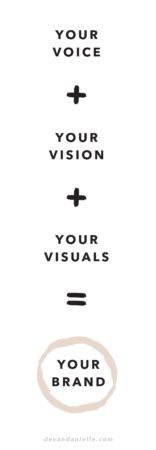Hey Miss Jane – I want to create and articulate my personal brand message, where do I start?’
 Hi, there lovely readers! In the first of my ‘Hey Miss Jane’ series, let me share a question recently asked by a Chief Financial Officer (CFO) transitioning to his next role. ‘I want to create and articulate my personal brand message, where do I start?’
Hi, there lovely readers! In the first of my ‘Hey Miss Jane’ series, let me share a question recently asked by a Chief Financial Officer (CFO) transitioning to his next role. ‘I want to create and articulate my personal brand message, where do I start?’
Good question! If you’ve been bum up, head down in your company, chances are you’ve not had a chance to actively nurture and promote your personal brand in the marketplace. Problem is, the minute you leave or your position is made redundant, your work email address, mobile phone and contacts disappear and you effectively become invisible. That’s not good for you will want to be found, to be seen, to be networked, to be potentially job offered. Problem is, not everyone feels comfortable with promoting their brand.
I’m a private person, I don’t feel comfortable ‘marketing’ myself
 Regardless of whether you are gainfully employed or currently in the job market my lovely reader, you need to kick the “I’m a private person, and I don’t feel comfortable ‘marketing’ myself” last century self-talk to the curb and step up, shape up your personal brand and ‘own’ it!
Regardless of whether you are gainfully employed or currently in the job market my lovely reader, you need to kick the “I’m a private person, and I don’t feel comfortable ‘marketing’ myself” last century self-talk to the curb and step up, shape up your personal brand and ‘own’ it!
Let’s face it; companies spend millions on advertising to build and maintain their brand image. Well, we too are a brand. We are the CEO of our brand, accountable for our brand’s professionalism, the curators of our brand’s marketing. And as social media and professional social networks such as LinkedIn, Instagram and Facebook Page (not to be confused with Facebook Social) continue to emerge, even more so. (In fact, not being active on certain platforms fuels suspicion – a technical Luddite Something to hide?)
Today we have an endless number of possibilities to build, strengthen or recreate our personal image. The question is not whether you want to be a brand, but whether you want to shape it yourself or let others do that for you!
Branding is what people say about you when you are not in the room’
Two friends shared their personal branding benefits:
“I started building my personal brand online with the help of LinkedIn, Facebook, Instagram, YouTube, Twitter, and my personal website and blog, long before I became an independent public speaker. Sharing successes, posting videos, images, and summaries of conferences I presented at, writing articles on the customer experience including my own, customer delight being the premise of all my work. Doing this showed my network that I’m an expert in that field – this helped me to lay the groundwork and find clients.” (Matt)
“I‘m working as an account manager at a technology company that offers project management software. As I’m interested in fashion, I post and write regularly about the latest tech trends in that industry on Twitter, Instagram, and LinkedIn. My boss sensed that my knowledge in that industry was of value due to my client portfolio garnering more and more fashion companies, and thus assigned new customers coming from the fashion industry directly to me.” (Clare)
You can see that building a personal brand doesn’t happen overnight. But when you are ready to invest some time in these steps, your career will benefit from it in ways you probably can’t even imagine!
Interested? Six simple steps…
1. A Personal Branding Statement
Concise and to the point, a personal branding statement shows who you are and what you have to offer. As you develop your statement, think about the following:
- What are you good at, passionate about and thoroughly enjoy doing? (skill + interest = strength)
- What makes you stand out from your peers? e.g. Your bubbly personality? Your ability to communicate complex things in simple language? Your problem-solving skills? Your eye for finding smarter ways to tackle tasks? Your ‘can-do’ attitude?
- How do you want to make a difference? What superpowers have you used in your past and present roles and how have they benefited employers and clients?
What do others say that you do exceptionally well?
- What were the most important work-related projects that you completed – how did you master them? Did you collaborate with others? Dig deep and be resourceful? Take risks? Did you have to be creative and think of new approaches, come up with new solutions? Use your network? Now identify three attributes that are common to the way you completed the projects.
Once you’ve determined these you’re almost there. Compose that line and pop it above your Career Summary in your Resume, under your name in your LinkedIn profile, in the LinkedIn summary, on your Facebook and Twitter, and under your email signature.
2. Backup that Statement
Until you have proof, your personal brand is merely hearsay. Think about all the times you used those attributes and jot down the challenges/situations you were addressing; the specific actions you took to address them and the quantifiable outcome of those actions. You now have a few fantastic achievements to back up your brand statement. Add these to your Resume, LinkedIn summary, etc.
3. Audit
Now that you know how your brand looks and feels, it’s time for an audit! Enter Google. Search your name and see who shares it. If your name is common, consider using your middle initial or middle name. From there, push yourself to Google’s first page and ahead of that competition by building your brand through content on social media platforms relevant to your brand, always with your branding byline included in your profile summary. The more active you are on your social media platforms the closer you will appear at the top. Using a consistent profile picture helps, too.
4. Consider a Personal Website
Having a personal website is not only one of the best ways to rank your name on Google; it also looks professional in your email signature and on your social media profile. It doesn’t need to be content-rich. A simple site with content similar to your resume with links to other social platforms and a short bio is enough. Over time you can add a blog or a Twitter feed, YouTube links, publishes papers, anything relevant to support your brand message. You can also add some lines about your personal life – it gives people something to connect with instantly. Here’s mine Jane Telford
5. Add (focused) value
Now that your brand is taking shape, the fastest way to establish yourself as an expert in your world of work is to share articles aligned with your brand message. You can do this by following Influencers, companies, Media, Publications, and hashtags on LinkedIn. Be picky about the things you post, consistent in your chosen fields of interest, and conscientious of the value you can provide your connections. Choose content that not only shows your expertise but also is of interest to your (potential) followers. Where possible, select a nugget that interested you in an article and comment as you share. Much more personable than merely on-sharing.
6. Influence!
 Now your personal brand has been established, has been backed up with proof, and further reinforced through content sharing on social media sites, being an actual contributing author can add further value to your brand. Consider using the blog application on social media platforms or even creating your own and using a savvy application to share your content automatically across all your social media platforms.
Now your personal brand has been established, has been backed up with proof, and further reinforced through content sharing on social media sites, being an actual contributing author can add further value to your brand. Consider using the blog application on social media platforms or even creating your own and using a savvy application to share your content automatically across all your social media platforms.
Follow these steps and you’ll have your personal brand message built and promoted in no time. It takes consistency and ongoing “construction” to keep the flame under your brand alight, but once you set up the basics, the brand will work for you and open new doors!
Last but not least – you can take a look at strong personal brands like Richard Branson, Andy Foote, Lets Grow, for inspiration. If you are my candidate and reading this, we are already well on the way to building a strong personal brand for that’s my expertise, my personal brand in action. We just need your story to be told right and in a unique way! Your personal brand – sharp, focused, and most importantly, visible!
If you’d like to connect with me, you can find me here: LinkedIn: Jane Telford






